Are you one of these go-getter Field Communication Technicians that puts their hand up for anything? You want to collect all the skills by yesterday?
Advance Mobile Faults you say? Yeah, I can do that boss! 👌
Only to spend the whole fault Googling and quickly teaching yourself each abbreviation and trying to work out what the purpose of an Ericsson Baseband is! I have been there done that.
This fault though is one that I struggled to find clear instruction on...well at least one that links Telstra speak.
Task: Configure your Site Master to measure the return loss on an antenna within a specific frequency. And work out if the fault is inside the hut or outside?
First let's work out what VSWR is and then I will show you how to sweep an antenna for it.
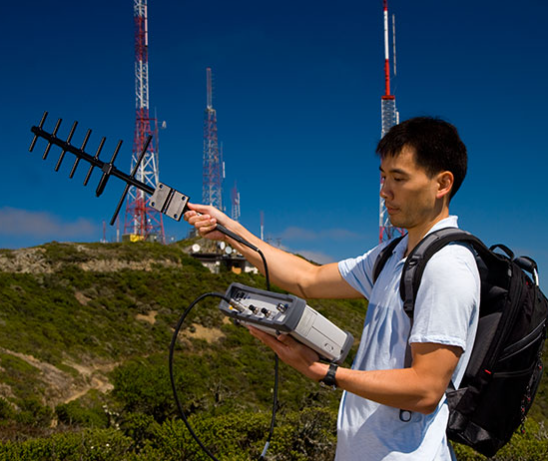
What is VSWR & Return Loss?
Voltage Standing Wave Ratio (VSWR):
VSWR is a measure of how efficiently radio-frequency (RF) power is transmitted from a power source, through a transmission line, into a load. If all the power is transmitted to the load, the VSWR is 1:1. If some of the power is reflected back towards the source, the VSWR is higher. A higher VSWR indicates more power is being reflected back, which can cause inefficiencies and potential damage to the system.
Return Loss:
Return Loss is a measure of how well devices or lines are matched. It is the ratio of the reflected power to the incident power, expressed in decibels (dB). A higher return loss indicates better matching and less power being reflected.
Testing VSWR and Return Loss with a Site Master
A Site Master is a handheld device commonly used for testing RF transmission lines and antenna systems.
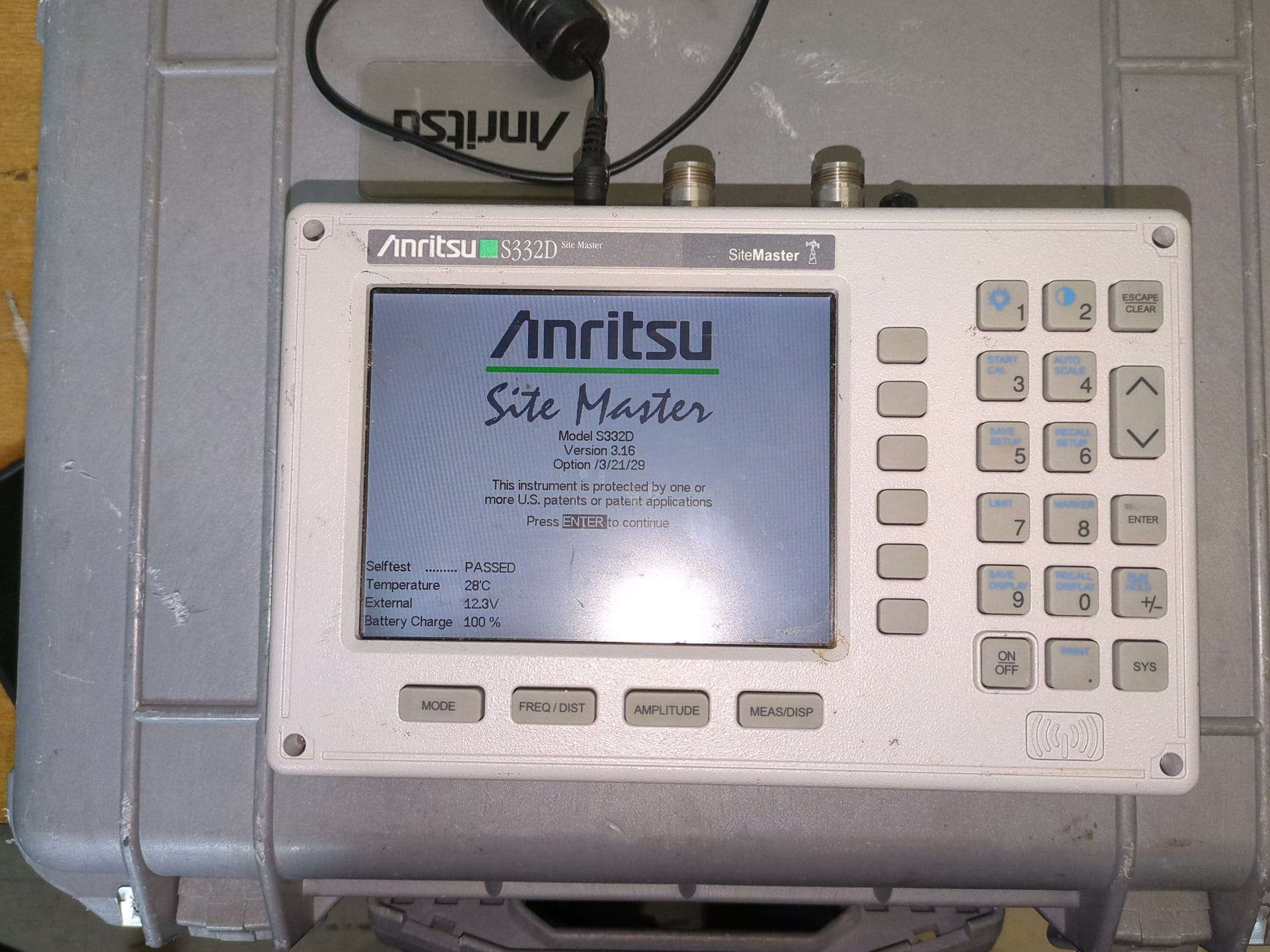
Here’s how you can test for VSWR and Return Loss using a Site Master:
Setup the Site Master:
- Turn on the Site Master.
- Wait for the Selftest.
- Find the calibration tool.
Select Measurement Mode:
- Choose either VSWR or Return Loss measurement mode on the Site Master.
- Set the frequency range you want to test (every time you change this you will have to re-calibrate).
- Ensure it covers the operational frequency range of your system.
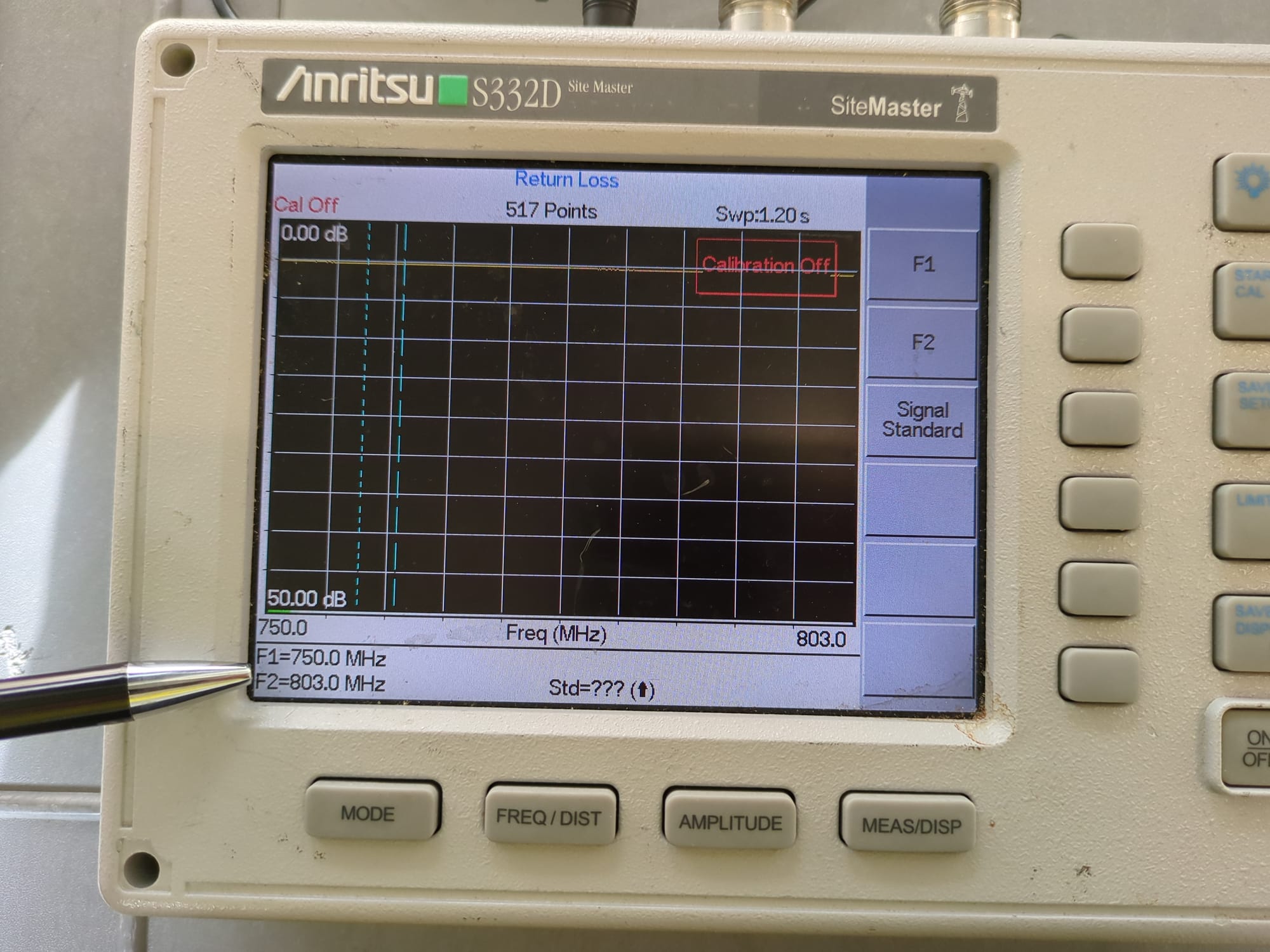
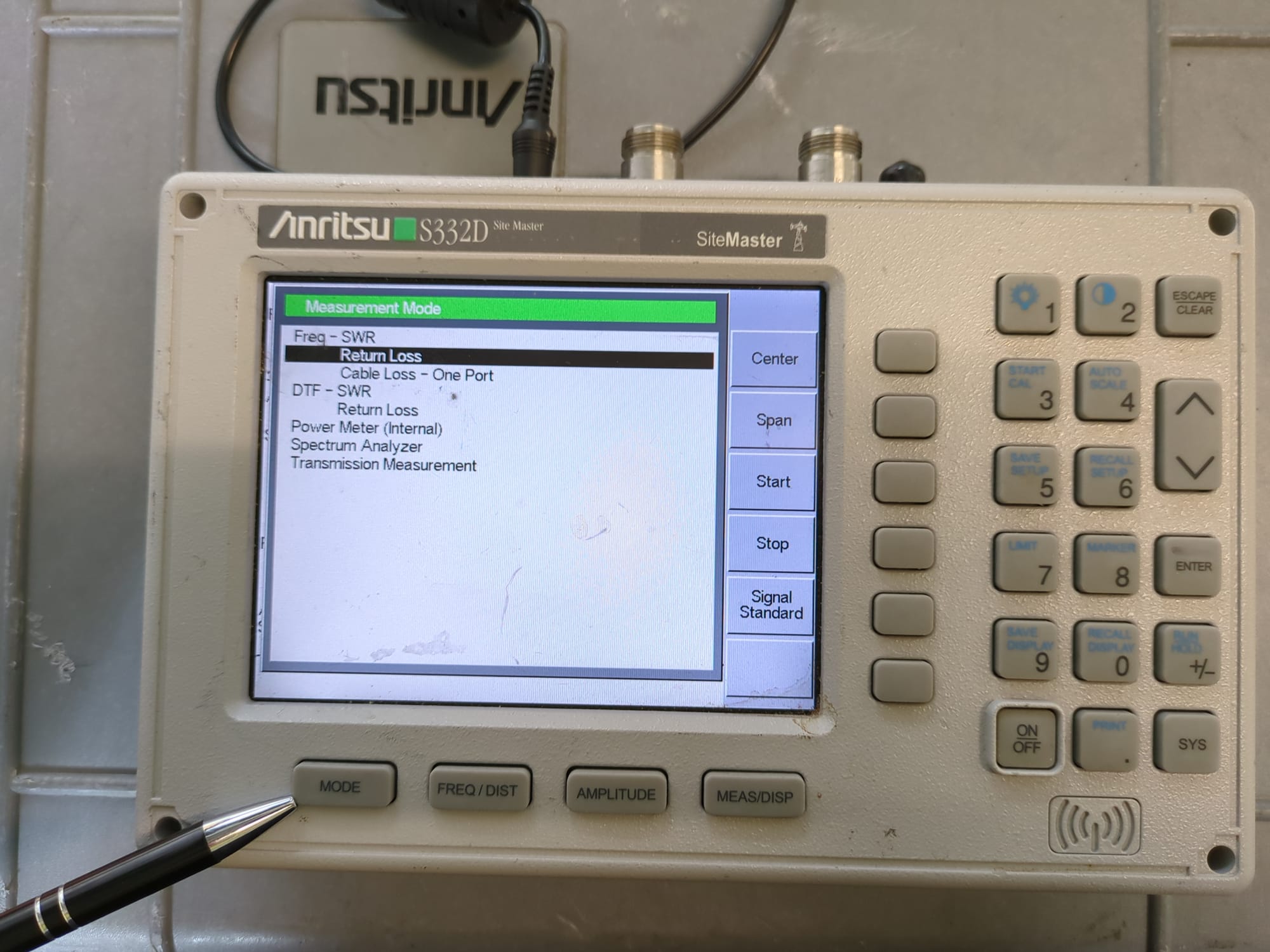
Select the mode & Set Freq.
Calibrate the Site Master:
- Follow the devices calibration prompts.
- This typically involves connecting a calibration kit that includes an open, short, and load.
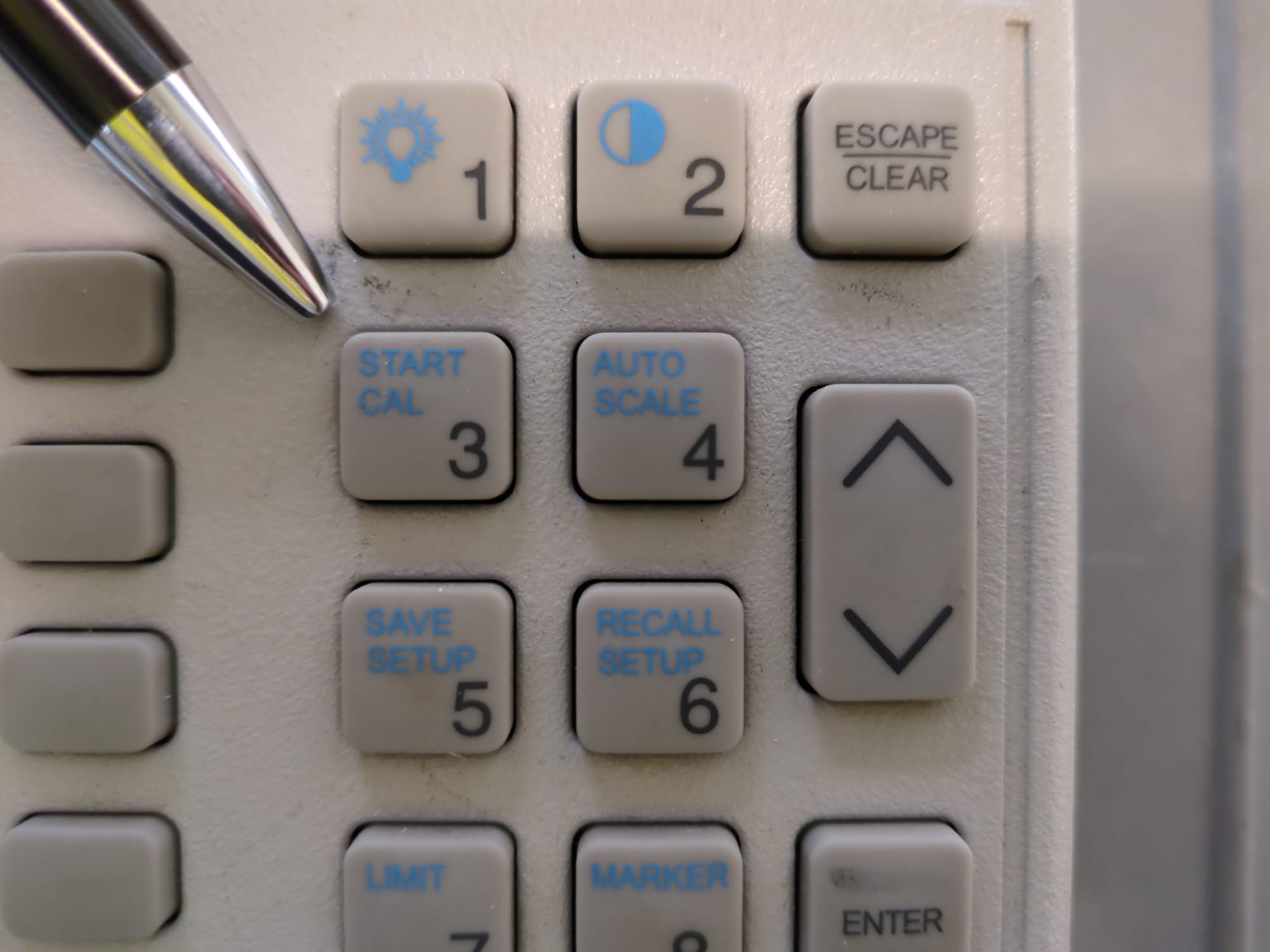
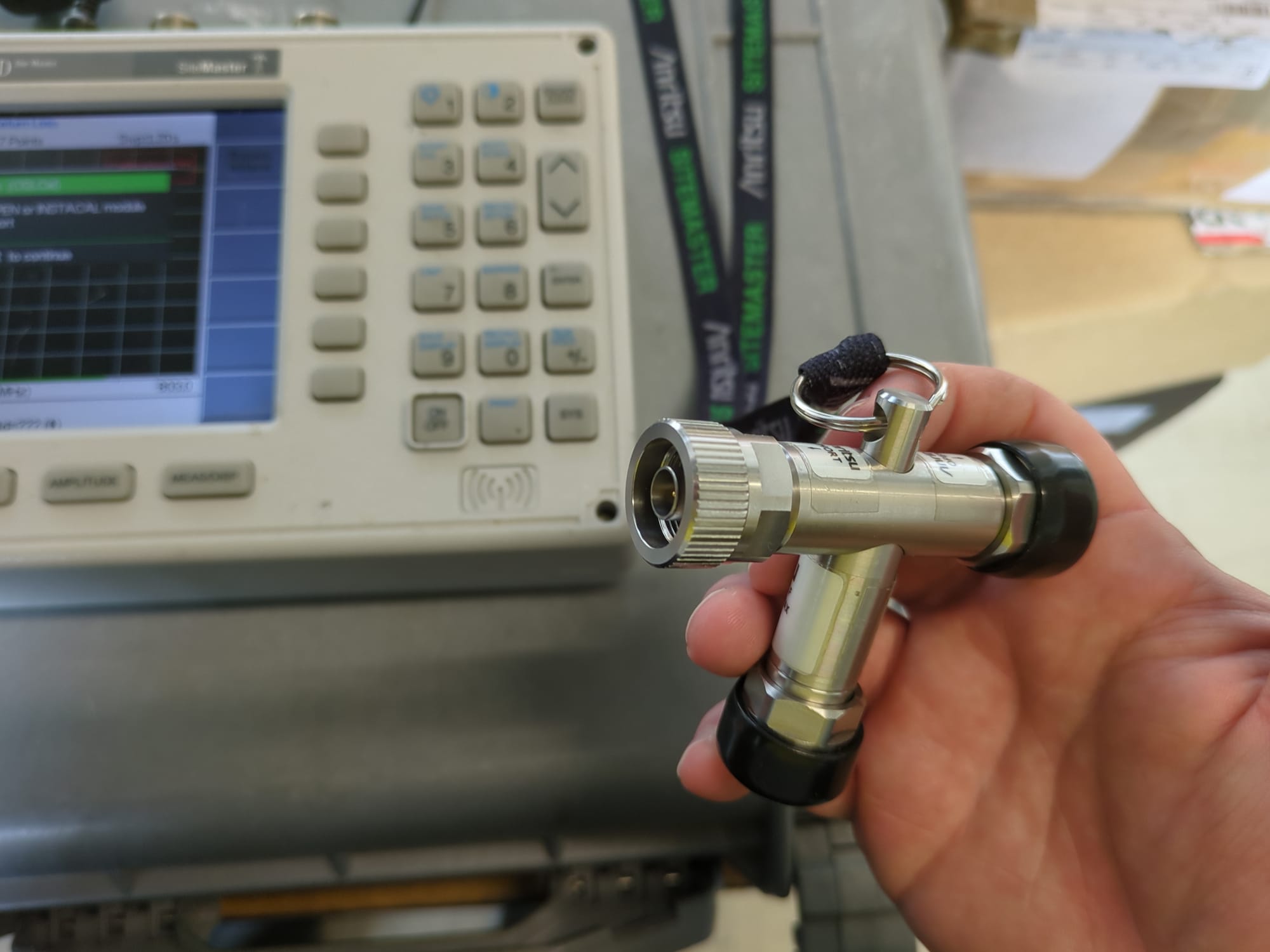
Calibration button and tool.
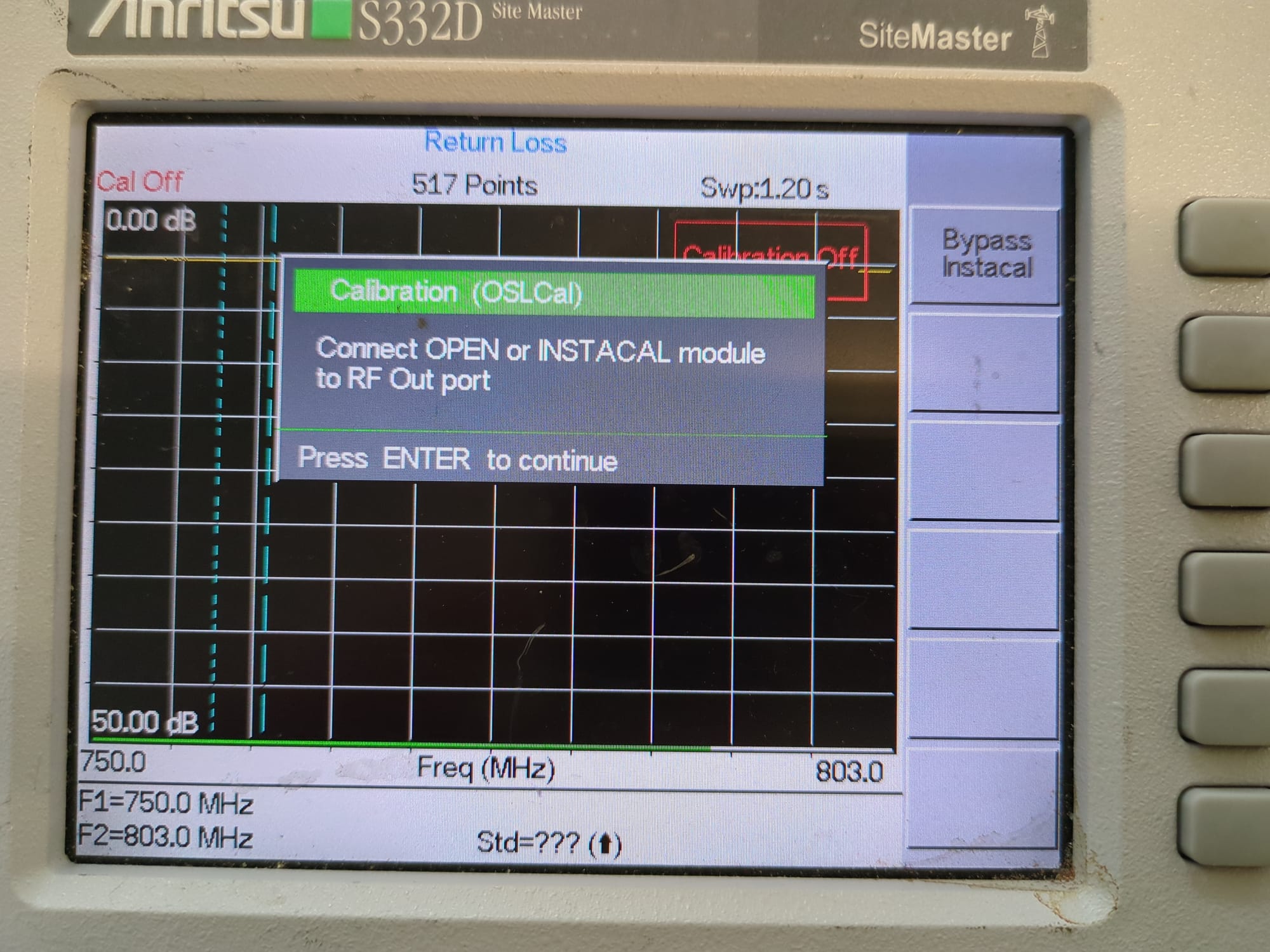
Perform the Test:
- Run the measurement. The Site Master will send an RF signal through the transmission line or antenna.
- The device will measure the reflected signal and calculate the VSWR and Return Loss.
- Analyse the Results:
- The Site Master will display the results on its screen.
- For VSWR, look for values close to 1:1, which indicate good matching.
- For Return Loss, higher values in dB indicate better matching.
Interpretation of Results
- VSWR:
- 1:1 to 1.5:1 – Excellent
- 1.5:1 to 2:1 – Good
- 2:1 to 3:1 – Acceptable, but may need improvement
- >3:1 – Poor, requires attention
- Return Loss:
- >20 dB – Excellent
- 15 to 20 dB – Good
- 10 to 15 dB – Acceptable
- <10 dB – Poor
More information coming soon.
Subscribe to our email newsletter and unlock access to members-only content and exclusive updates.

Comments